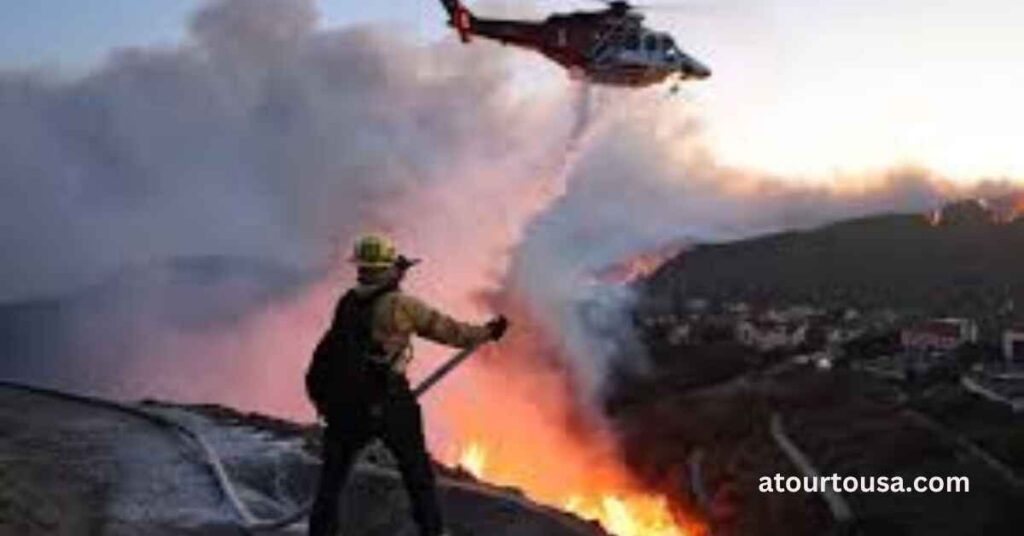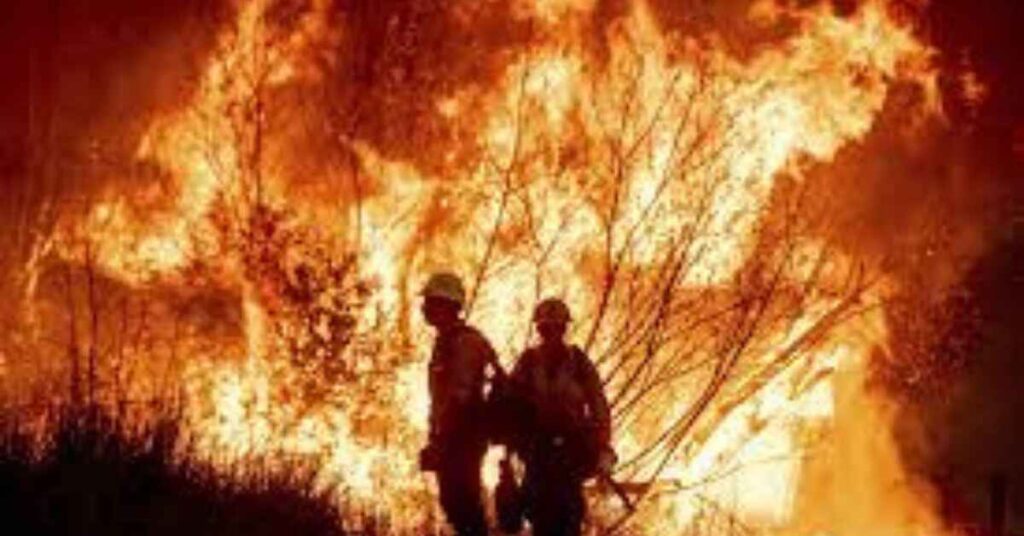Los Angeles, the film capital of America, has been destroyed countless times in Hollywood films. Sometimes there’s a big earthquake, sometimes a devastating tsunami. It’s destroyed by tornadoes and aliens, too. This city has endured a lot in movies, but now, in reality, fire has destroyed Los Angeles. But what are the reasons for the firestorm in Los Angeles, California? In this article, we try to discover some of the reasons for this dangerous brush fire.
When did the Los Angeles Wildfires start in 2025?
On the morning of 7th January, this fire started in an area known as Palisades. The same night, fires broke out in Eaton and Hurst too. By 9th January, Kenneth was also engulfed in flames. Several other areas were engulfed, including Lidia, Archer, Woodley, and Sunset. By the morning of 12th January, the fire at Lidia had been completely doused, and the fire at Kenneth was about 90% doused. The one at Hurst was 76% controlled. But only 15% of the Eaton fire and only 11% of the Palisades fire were in control.
What’s causing all the fires in California?
The most shocking thing about this event is that it’s happening in January. In January, it’s winter in Los Angeles. This month gets the highest rainfall in the year. So how did we get to such a devastating firestorm? There’s a conspiracy behind this. Let’s try to understand it in this article.
Geographical Issues
Los Angeles is located in a Mediterranean climate zone, characterized by hot, dry summers and mild, wet winters. If you look at this event only from a geographical perspective, the reason is said to be that southern California didn’t get enough rainfall this year. Leading to lower humidity, and so the vegetation dried up. The air was too dry; apart from this, there were strong winds, powerful offshore winds, known as the ‘Santa Ana’ winds. These winds made the fire weather worse. If you look at the map of America’s western coast, you will find the Rocky Mountains here. It causes low-pressure areas around California’s coast. Winds are caused by this pressure difference. When these winds descend from the mountains, they warm up, and the humidity drops below 10%. Then this hot, dry air makes the forest drier and increases the possibility of wildfire. Even a small fire or a spark turns into a big fire and spreads rapidly, but the real question here is that these conditions—low rain, low humidity, dry vegetation, and heavy winds—cause these conditions.
Human Activities: A Major Catalyst
The majority of forest fires in Los Angeles are caused by human activity, such as campfires and fireworks. Unattended campfires or the use of fireworks in arid areas can cause fires. Power Line Failures: Electrical equipment malfunctions, especially during strong winds, can produce sparks that start wildfires; Cigarette Butts: discarded cigarette butts are a common source of ignition, especially in areas with dry grass or leaves; and intentional arson: Regrettably, some fires are started on purpose by
How many people and areas are destroyed in LA, California?

The wind-fed brush fires have killed at least 24 people and swept through 40,000 acres in the greater Los Angeles area, destroying entire communities and more than 12,300 structures. It’s been more than a week since this fire started, but even now this fire is still burning. People’s homes have burnt down. About 200,000 people have been given evacuation notices. According to JP Morgan’s estimates, this will cause a financial loss of approximately $50 billion to the city of Los Angeles. This is not a standalone fire; there are multiple fires at multiple locations.
Final Thoughts: Handling the Forest Fire Emergency
Los Angeles brush fires are caused by a complex interaction of human and natural forces, with climate change acting as a primary catalyst. It is necessary to take proactive measures to reduce the danger, such as strengthening forest management, enforcing more stringent fire safety laws, and raising public awareness. Furthermore, long-term reductions in forest fire frequency and intensity depend on global climate change management. Policymakers, communities, and individuals may reduce the destructive effects of wildfires in Los Angeles and elsewhere by cooperating.
